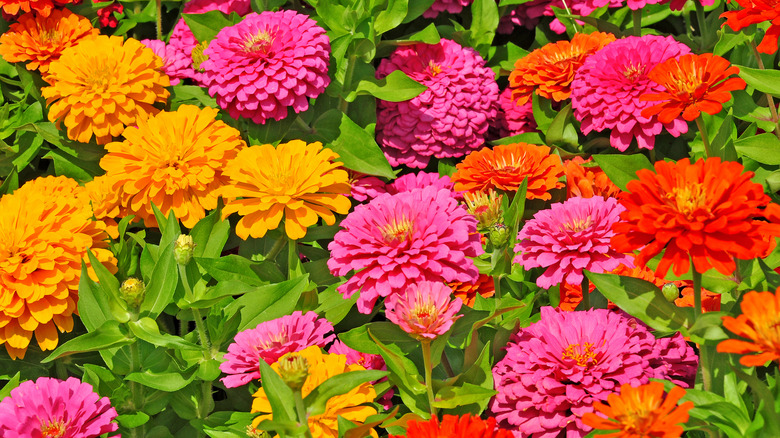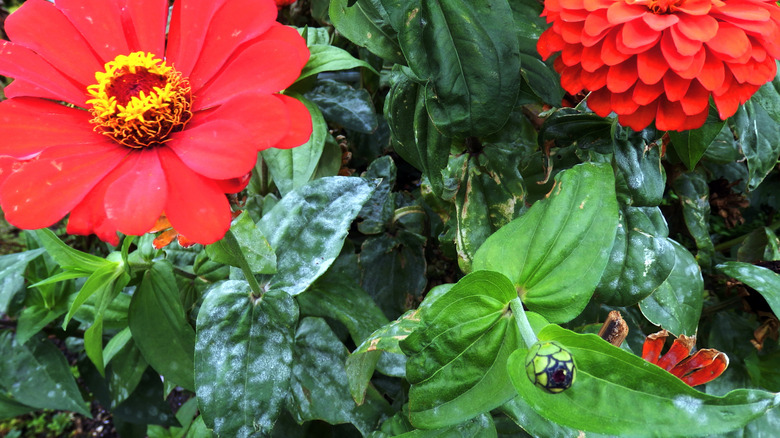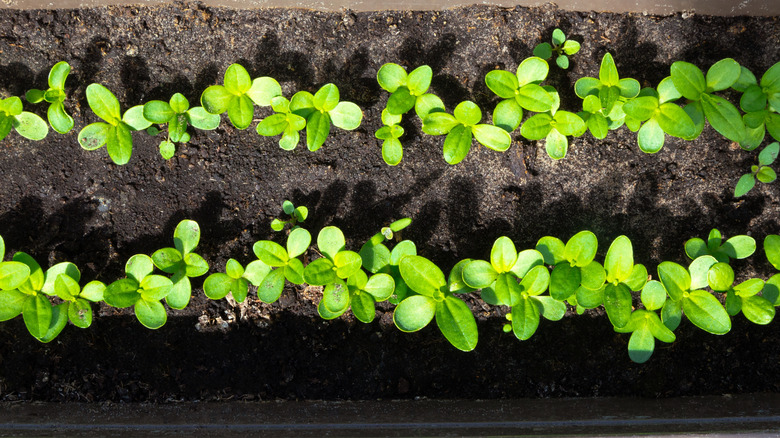The Downside To Planting Too Many Zinnias That's Causing More Harm Than Good
We can't blame you if you want a garden bursting with the vibrant color zinnias (Zinnia elegans) can bring to the landscape. While growing and caring for zinnias is not particularly hard, every plant has needs. And if you try to pack too many zinnias into a small space, you may wind up causing a host of problems that will backfire and result in the complete opposite of the outcome you were hoping for. Yes, overcrowding your zinnias may result in fewer and smaller blooms, but even more importantly it can promote fungal diseases like powdery mildew, blight, and Botrytis.
Like most plants, zinnias will compete for moisture and sunlight with surrounding plants, so proper spacing is always important. However, zinnias also need good airflow to prevent fungal diseases making it more important to leave plenty of space for the plants to breathe. Additionally, when planted too densely, zinnias that are competing with one another will focus on growing tall instead of producing blooms. Generally, they will need 6 to 12 inches of space between plants. However, zinnias come in many varieties, so you should pay close attention to the planting instructions on your seed package or starter plants.
Common fungal diseases in zinnias
Blight is one of the most common problems to impact zinnias and is caused by the fungus Alternaria zinniae. It shows up as brown spots on the foliage that grow and connect. Eventually, this causes plants, including blossoms, to wither. In this case, proper spacing not only improves airflow but can ensure leaves dry out quickly and makes it easier to water plants at their base which will also help prevent the disease. If your plants are already infected, remove and destroy all impacted material and consider rotating in a different crop.
Powdery mildew in zinnias manifests with white, powdery spots on the foliage. Sometimes, it's just an aesthetic issue, but other times, it can lead to premature leaf loss, discoloration, or withering. If you provide enough room for proper airflow, you should be able to avoid this problem. If it's too late, learn how to treat powdery mildew with common kitchen staples.
Botrytis is another fungal problem that can start out looking like a white mold that eventually turns gray. Humid conditions foster this infection, and it is easily spread once it takes hold. Making sure air is able to move freely is critical to preventing Botrytis. If it's already in your garden, remove all effected material and any fallen leaves from the ground. Be aware that wounded plants are more susceptible to infection so removing infected plants entirely is your best bet.
Planting zinnias for the best results
Spring is a chance to start zinnias off right. Once the danger of frost has passed, you can take your seeds out to the garden and sow them directly in a sunny spot. While you can seed these closer together, you will want to thin them once the seedlings reach about 3 inches high. You may want to plant zinnia varieties of differing heights so you can put shorter versions to the front of your beds. Dwarf varieties need about 9 inches of space, while taller versions will do better with a full foot of space. In colder climates, start these plants indoors about four to six weeks before the last frost in your area.
It's important to note that planting too close is just one mistake to avoid when growing zinnias. However, if you give these plants the sunny spot and rich, well-drained soil they require, they will produce colorful blooms all summer long. They make great cut flowers, and you can use this foolproof test to tell whether your zinnias are ready to be cut.


